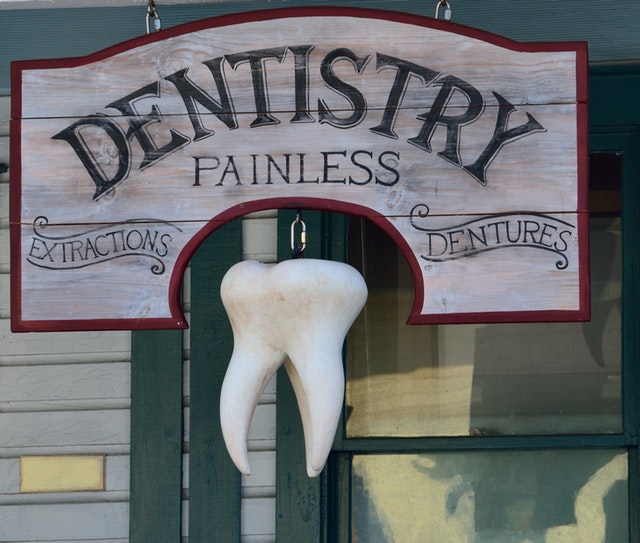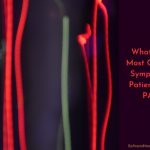
(Source: Pexels)
Most people avoid the dentist due to dental anxiety and phobia. The stress and fear give them a feeling that something dreadful will happen during the treatment and hence, avoid the dentist. It results in bad oral health, which in the future causes plague, decayed teeth, missing teeth, and poor periodontal status. Sedation dentistry is a savior for all such individuals. Dentists can administer sedation dentistry either through IV, inhaling nitrous oxide, or orally. It helps the patient lose consciousness to a certain level, helping them remain calm and comfortable. It is helpful for individuals who have a fear of undergoing a simple tooth cleaning or a complicated invasive procedure.
Let’s have a look at the type of dental sedation and how they help you relax during the treatment.
1. Relaxation by Laughing Gas
It is a mild sedation technique, in which the patient breathes in nitrous oxide, also known as laughing gas, through a nasal mask. This gas helps the patient relax for the procedure. The dentist has control over the amount of gas that you inhale, depending on the length of the surgery. They also make sure that the patient does not overdose. Since this is a gaseous form of sedation, it reaches your brain quickly to induce a state of relaxation. It is suitable for patients who have extreme fear and anxiety. When you inhale nitrous oxide, it supersedes the air in your lungs and blocks oxygen from reaching your brain and blood. Deprivation of oxygen triggers the popular giggles. It may also give you mild hallucinations. But when the dentist discontinues the drug, it leaves the body speedily within five minutes. The patient can safely drive home without a companion. Another benefit of nitrous oxide sedation technique is that it is non-allergenic, and patients with pre-existing conditions like cardiovascular disease or diabetes can also have this sedation.
2. Relaxed while being conscious and sedated
One should take oral sedatives an hour before the procedure. Your total dose depends on your anxiety level. For minimal sedation, only one pill is sufficient. For moderate sedation, the treatment can increase, and it is standard advice to take the sedative an evening before the procedure. You feel a little tired, less anxious, but fully awake. This sedation technique keeps you comfortable and relaxed yet conscious enough to talk about any concerns or answer questions. Oral medications help patients relax by working on the central nervous system. It has fewer side-effects and works faster than other techniques. It is a perfect solution for people with the fear of needles.
3. Infused relaxation technique
People with acute anxiety need deep sedation, i.e., an IV(intravenous) sedation. This sedation technique is suitable for patients undergoing painful or complicated treatments like the extraction of wisdom teeth or root canal. The drug diffuses through a vein in your hand or arm and works quickly. It also allows the dentist to control the sedation level. Constant monitoring of the patient’s blood rate helps in reducing the blood pressure and keeping them relaxed. Since the drug induces into the blood, IV sedation dentistry is more useful to perform simultaneous multiple dental procedures. The consciousness level varies according to the seriousness of the dental procedure. Upon completion of the process, the dentist annihilates the sedation drug, which reduces drowsiness and other side-effects in no small extent.
4. Relaxation through unconsciousness
When you are in general anesthesia, you are totally unconscious, feel no pain, and completely relaxed for the entire procedure. You cannot be easily awakened. The drug induces through a vein along with the inhalation of a gaseous anesthetic. This sedation technique is suitable for cases of extensive dental procedures and under constant monitoring of blood pressure and heartbeat. You wake up once the effects of anesthesia wear off.
5. Relaxes against Gag reflex
The gag reflex is a common problem of patients during dental procedures, especially while using instruments like suction devices and scalers. It triggers the gag reflex and makes the oral procedure uncomfortable. Sedation dentistry helps in relaxing the soft tissues and muscles in your body that leads to strong gag reflex. It then helps the patients to have a comfortable treatment.
6. Electronically delivered anesthesia
This mode of anesthesia is an alternative way of inducing local anesthetic and people who fear injections. It is also known as transcutaneous electrical nerve stimulation or TENS. In this method, the treatment area becomes numb by placing adhesive pads on the face, and electrical impulses are sent through a battery-powered device to numb it. The patient can control the stimulation level using a hand-held unit and feels relaxed for the treatment.
7. Relaxation by sending brain waves
Cranial electrotherapy stimulation is also a form of electronically delivered anesthesia. In this technique, the dental surgeon or the technician relaxes the brain and the tissues in the affected area by passing electricity through the brain. The patient can control the pain by increasing or decreasing the intensity of the current. The effects of both cranial and electronically delivered anesthesia wear off easily once the device switches off. The patient can resume their daily activities immediately after their dental visit.
Conclusion:
Having dental phobia, fear of needles and anxiety of dental procedures is normal. But it’s not okay to put off dental care because of your fear of pain. You must discuss the above dental sedation techniques with your dentist to find the best option for you. Only experienced and trained professionals should administer sedation dentistry.
Ignoring your oral care habits can lead to oral health risks. The problems can become more complicated if you keep postponing your dental appointment. This will only lead to an extensive dental procedure. Discussing your fears with your dentist will put you at ease when you are on the chair. You must also discuss your health problems if any, with your dentist. This will help them find the right solution for making your treatment comfortable, less anxiety, and pain-free. Other than sedation dentistry there are hypnosis, acupuncture, therapies and relaxation techniques also help you in getting relaxed.
About The Author:
Jessica Smith has been writing articles for e-business and elance sites for more than 4 years. Her educational background is Masters in English and journalism which gives her a broad platform to write on a variety of topics with ease and efficiency. She is an independent writer especially enjoys writing on fashion, lifestyle, health, and medical niche. Recently she is obsessed with new advancements in dentistry like IV Sedation dentistry.




